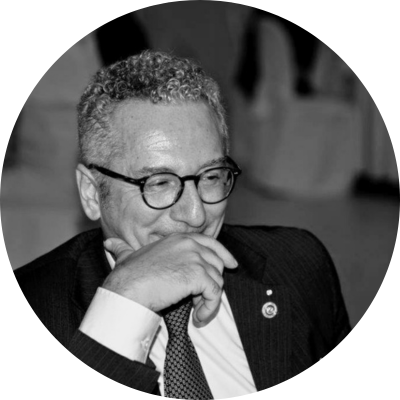
Moldova-Transnistria: a window of opportunity for the protracted conflict?
The first Moldova Reintegration Forum has been a new occasion to debate some of the issues that for many years have shaped the protracted conflict with Transnistria. In the changing regional context, however, old issues emerge under a different light, opening a window of opportunity for moving forward.
On the 11th of April, the Moldovan Bureau for Reintegration along with some prominent Moldovan think tanks organized the first Moldova Reintegration Forum . Not a huge event and not the first time – despite the name of the forum – that the reintegration of the Transnistria region in Moldova is at the core of a conference. However, this time the sentiment in the conference room was different: is there any chance to overcome the longest-lasting ongoing protracted conflict in continental Europe? Some speakers seem more optimistic than in the past. It seems indeed reasonable to think that the coming months will offer a window of opportunity for the resolution of the Transnistria conflict, even if not necessarily in terms of the reintegration of the two banks of the Nistru/Dniestr river. Notably, Transnistria declared independence from Soviet Moldova in 1990 and a war erupted in 1992 between Russian-backed separatists and Moldovan forces that ended with a ceasefire and a frozen conflict ever since.
An unexpected negotiation process?
This possible (but still unpredictable) scenario is not based on ongoing negotiations. The OSCE 5+2 format is at a stalemate and no other attempt of direct mediation can be seen. Yet, the full-scale invasion of Ukraine by the Russian Federation has changed some substantial issues and perceptions. After the great fear in Moldova in 2022, when many Moldovans were ready to leave the country if Moscow had taken the Odessa region threatening Chișinău, now the perception has changed. While the Kremlin is still a threat, Moldova is more focused on its future than ever before.
The current window of opportunity is supported by two main factors. Firstly, the gas subsidy , through which Moscow provides gas to Tiraspol effectively free of charge, may well be over on 1 January 2025. This change can open an economic and social crisis in the region and push the local politicians and economic elites to look for viable alternatives. Secondly, the war in Ukraine gave new relevance to a basic geographic fact: the Russian Federation has not a direct access to Transnistria. This factor reduces the scope for its influence on the region, at least from a military perspective.
Moscow and the role of Găgăuzia
Clearly enough, Moscow has still other means to destabilise Chișinău, especially ahead of the presidential elections and an EU referendum on the 20th of October in which Maia Sandu is likely to be re-elected as Moldova President. After the full invasion of Ukraine, different false flag operations happened in the Transnistria region, sometimes almost ridiculous and did not have a relevant impact. Similarly, the prospect of a Russian annexation of Tiraspol seems unlikely and not even desirable for most of the Transnistrian elites.
In this context, Russia has been working on other approaches for putting pressure on Chișinău, including through another Moldovan region: Găgăuzia. This region, mostly populated by Orthodox Gagauz, a Turkic ethnic group, is politically close to the Russian Federation. In early April, Evghenia Guțul, head of the autonomous region and elected thanks to the pro-Russian oligarch Shor, travelled to Moscow for an official meeting with Putin. During this visit, she signed an agreement which stipulates that all pensioners andpublic sector employees in the region can apply for a monthly payment equivalent to USD 100 funded by the Kremlin. Ironically, Găgăuzia is often considered as a “prevented conflict” because the region negotiated its autonomy with Chișinău and avoided a confrontation as it happened in Transnistria.
The role of EU integration and of the Moldovan leadership
In recent months, the Moldovan government has often sidelined the Transnistrian conflict perceiving it as a potential obstacle to its path toward the European Union. Moldova applied for EU membership in 2022 and was rapidly granted candidate status along with Ukraine. Josep Borrell, High Representative of the European Union for Foreign Affairs and Security Policy, has highlighted how the current situation of Transnistria does not represent an obstacle to Chișinău accession to the EU. Yet, this approach remains controversial in Brussels. During the above-mentioned Moldova Reintegration Forum, the Deputy Prime Minister for Reintegration of Moldova Oleg Serebrian has directly connected the process for reintegration to Moldova’s path towards the EU. Serebrian has also expressed the desire to open working groups with Tiraspol to discuss EU standards. He recognized that some issues, such as the demilitarisation of Transnistria, remain complex and at least partly related to developments in Ukraine. But overall, Serebrian’s approach seemed more proactive and conscious of the potential window of opportunity to negotiate with Tiraspol than in the past.
Despite Moldova-Transnistria still representing a long-lasting protracted conflict, several confidence-building measures have been implemented throughout the years with tangible benefits for the local population. The official negotiations on the status of Transnistria have achieved very limited results, but the internal so-called border has remained almost always open and the exchanges and movements between the two banks of the Nistru/Dniestr river have continued. As the regional context is changing, local leaders have a rare opportunity to move this situation forward despite all difficulties. Authorities in Chișinău will need to contain Russian interference in Moldovan domestic politics while staying true to their democratic and constitutional commitments. But they should not look at Tiraspol only as a vector of Russian interests. On the contrary, they should avoid taking a confrontational stand and instead pragmatically engage with Transnistria’s elites while demonstrating a sincere interest for the welfare and future of local residents.
This article – published jointly on balcanicaucaso.org and peaceagency.org – has been written within the project “Analysis of crisis scenarios in Moldova and Transnistria”, implemented by OBCT in cooperation with the Agency for Peacebuilding.
This project is realized with the support of the Unit for Analysis, Policy Planning, Statistics and Historical Documentation – Directorate General for Public and Cultural Diplomacy of the Italian Ministry of Foreign Affairs and International Cooperation, in accordance with Article 23 ‒ bis of the Decree of the President of the Italian Republic 18/1967.
The views expressed are solely those of the authors and do not necessarily reflect the views of the Ministry of Foreign Affairs and International Cooperation.































